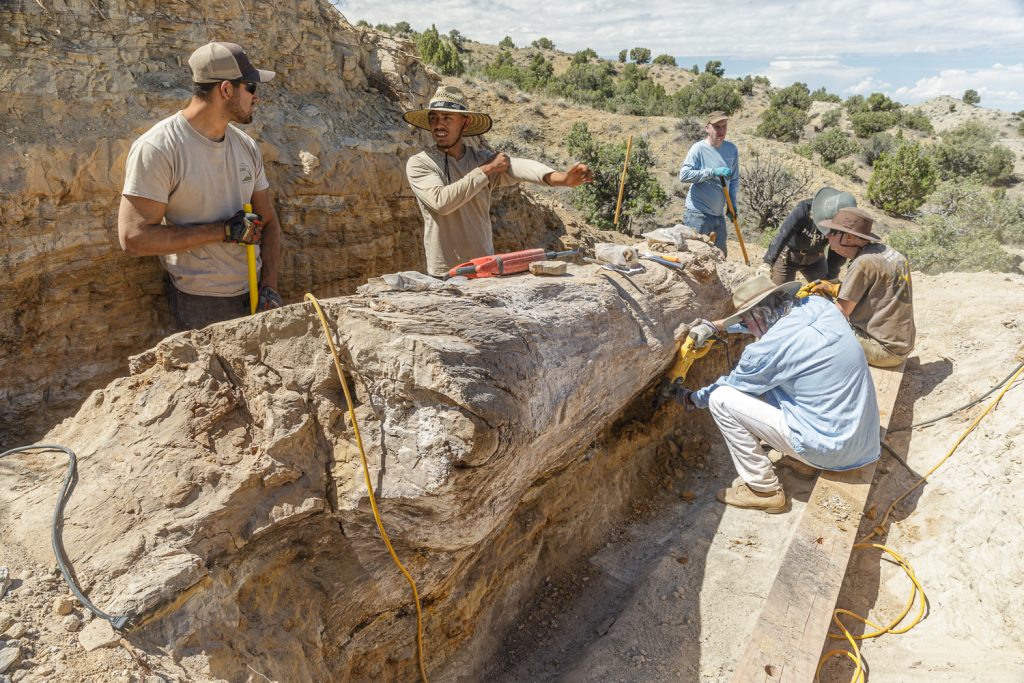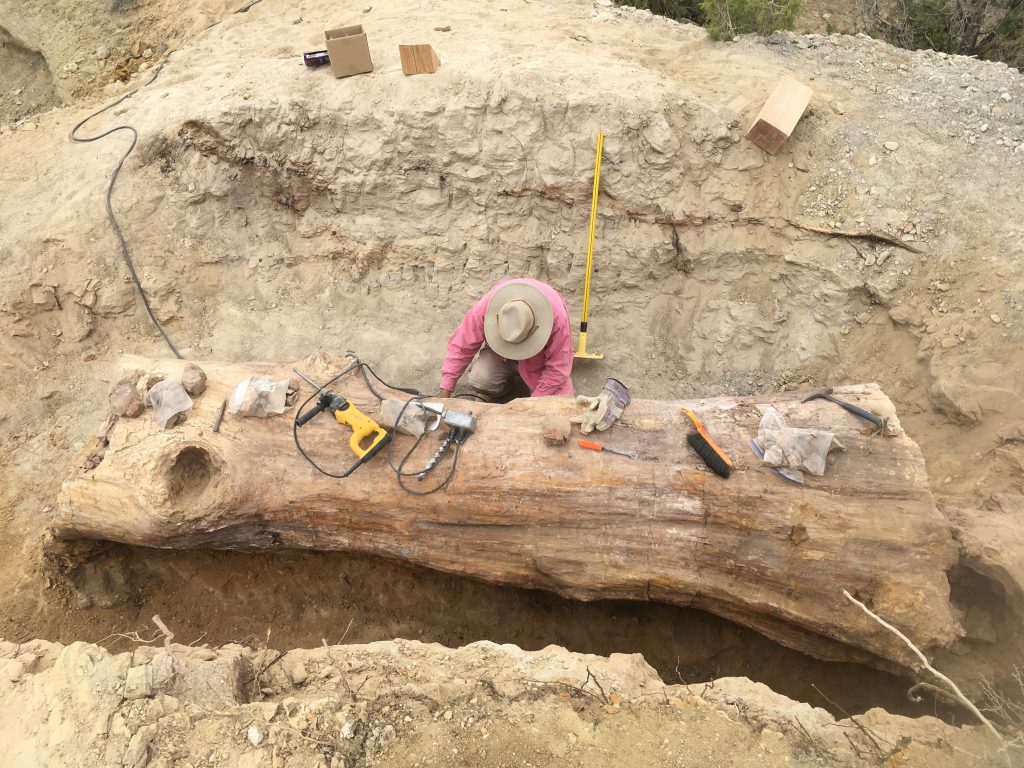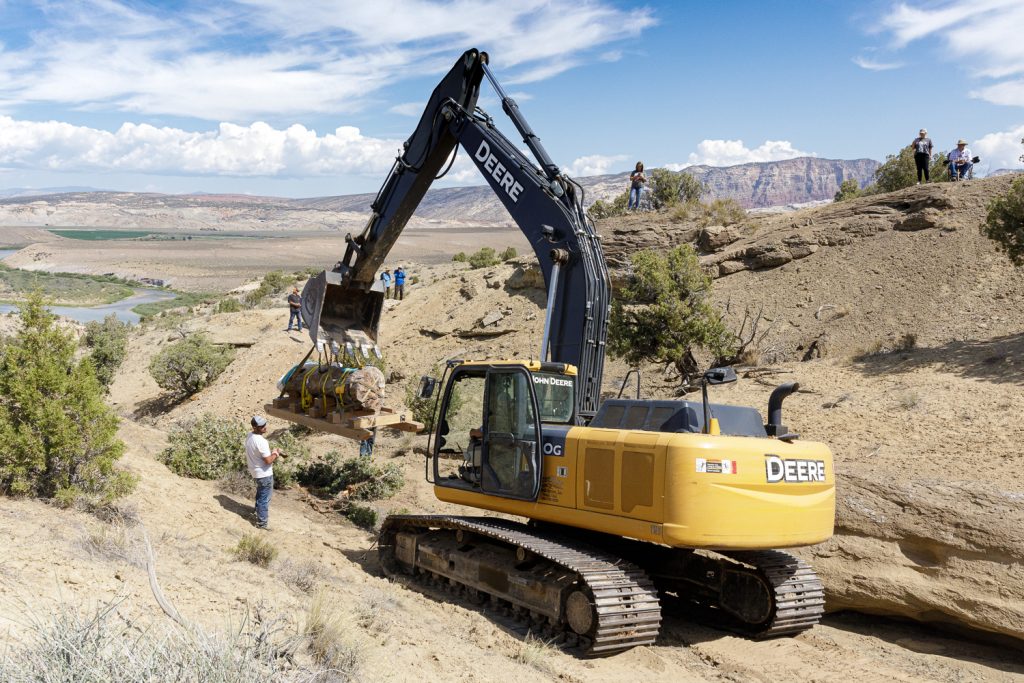Incredible 12-Foot Long Fossil Log Recovered from the Morrison Formation
August 11, 2021
Vernal, Utah — The Utah Field House of Natural History State Park Museum is celebrating the recovery of the “Manwell Log”—a 12-foot long petrified portion of a once-living tree related to our modern-day Norfolk Pine.
Named for the woman who discovered it, the “Manwell Log” is approximately 152 million years old and weighs in at eight tons. That’s more than the average school bus weighs!
This amazing area, known to many as the “Graveyard of the Dinosaurs”, was home to a diverse population of dinosaurs who would have depended on substantial plant fodder to survive—especially long-tailed dinosaurs known as the sauropods. Paleontologists originally believed the area, known as the Morrison Formation, was not home to many trees, but recent research is revealing that this layer was actually brimming with ancient forests! In fact, since the discovery of the “Manwell Log,” twenty-four other logs have been found.
The story of the log’s discovery and eventual recovery is almost as spectacular as the log itself. Eight years ago, Mary Beth Bennis, the education curator for the Utah Field House of Natural History Museum, and volunteer Dale Gray were doing research regarding fossil logs from the Morrison Formation.
“Manwell visited the Utah Field House of Natural History and told me about an incredible log she had come across while she was working. I don’t recall exactly what she did, but I believe it was survey work. Since she had no GPS coordinates, I took as accurate a description as I could of the tree’s location to better our odds. Somewhat remarkably we found the log and began to gather data on it,” shared Bennis.
Measurements were taken, and two fist-sized samples were removed from the log to be sent for testing. These samples would go to a paleobotanist and her graduate student at the University of Bonn in Germany where cell structure, still present after 152 million years, would reveal the ancient log was of the genus Agathoxylon, belonging to the family Araucariaceae. Think of the small pine trees decorated for the Christmas Season in the entryway of stores, but a hundred times more massive.
Bennis, along with colleagues from China and Germany, dreamed of moving the log into the museum. But that came with a unique set of challenges.
“Since funding is always a problem for museums, I was able to obtain a number of grants, and secure the valuable assistance of engineer, Phil Policelli, who donated his time to design a cradle for the log,” Bennis continued. “Not his first time at the rodeo, Phil also designed the cradle for the 9-ton Utahraptor block that now resides in Salt Lake City. This cradle would provide support for the entire length as the fossil made the stressful trip from the field to the museum.”
The next challenge to tackle was transporting the massive log to the museum. Advanced Towing and Automotive of Vernal, Utah graciously volunteered their services and equipment. Not only did they transport the log from the field to the museum, but they stored it overnight while the museum awaited the arrival of Intermountain Rigging the next morning. It took nearly two weeks for volunteers to move the log to its new home.
After a journey spanning approximately 152 million years, the “Manwell Log” now safely resides within the Jurassic Hall at The Utah Field House of Natural History where it can be cleaned, researched, and enjoyed by visitors for many generations to come.
Learn More about The Utah Field House of Natural History Museum!
Photos courtesy of Tom Howell



If you found this blog entry interesting, please consider sharing it through your social network.